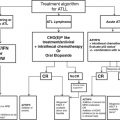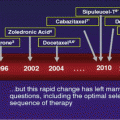© Springer International Publishing Switzerland 2015
Jean-Pierre Droz, Bernard Carme, Pierre Couppié, Mathieu Nacher and Catherine Thiéblemont (eds.)Tropical Hemato-Oncology10.1007/978-3-319-18257-5_50Cancer in Children
(1)
Hematology/Oncology, Cheikh Khalifa Hospital, Casablanca, Morocco
(2)
Pediatric Hemato-Oncology Service, Marrakech Mohammed VI University Hospital, Caddi Ayyad University, Marrakech, Morocco
1 Introduction
Childhood cancer represents less than 3 % of human cancers. However, it is a leading cause of death of children in Western population and growing cause of morbidity and mortality in developing countries. During last decades, this group of diseases has been a fertile field of research and achievements. Research in childhood cancer shed light in various mechanisms of carcinogenesis and provided efficient models of diagnostic and therapeutic approaches. Seventy to 80 % of children with various cancers are now expected to be cured if appropriate diagnosis and treatment approach are provided.
Cancer in children differs from that of adults. It is often embryonic and fast-growing proliferation. It is also highly chemotherapy-sensitive tumor. This is related to the nature of the cancer but also the particular tolerance of chemotherapy at this age. High rates of treatment success led to approaches seeking to minimize the cost of cure represented by medium- and long-term sequelae and impact on quality of life, education, and socio-professional integration.
2 Challenges of Care in Tropical Regions
Appropriate care of children with cancer requires however a high degree of organization of care and dedicated and accessible teams and facilities. This is not available in most of tropical area. This leads to the search for adapted approach in order to give these children the maximum chances of cure and reduce the risk related to treatment toxicity. Clinical skills and appropriate use of basic diagnosis and prognosis work-up are of great importance in this setting.
Significant improvement of care in this area and in other developing countries can be achieved through twinning and international collaboration [1]. This can help in creation of community of expert and young caregivers in these countries in order to improve their competence and help in putting into place the adapted diagnostic and treatment approaches. Besides the proper care in hospitals, no improvement can be achieved if proper information and some support to the family are not provided.
In this chapter, we will discuss the main features of childhood cancers in tropical regions focusing on the main adapted diagnostic and therapeutic options. Some aspects related to pediatric cancers in tropics are addressed elsewhere in this book.
3 Epidemiological Data
Incidence of childhood cancers varies according to the region and time reflecting the impact of environmental or genetic factors. Epidemiological data in tropical countries are often not reliable; they are primarily hospital based and in a context where access to care is low.
Lymphomas and in particular facial Burkitt’s lymphomas are the most commonly reported cancer in tropical regions. These tumors are found to be associated with Epstein-Barr virus (EBV) infection. This virus has been associated with Burkitt’s lymphomas but also with Hodgkin disease and immunosuppression-related lymphomas. Various markers in EBV infection are found in these patients and particularly virus gene in tumor tissue. Massively and early in life, EBV infection seems to induce uncontrolled B cell overgrowth resulting in lymphoma. In high prevalence human immunodeficiency virus (HIV) infection areas, Kaposi sarcoma is more frequently occurring. This is also reported to be related to EBV coinfection.
Retinoblastomas are also more frequently reported in the tropical areas. This increased incidence seems to be for unilateral non-hereditary cases and may be related to socioeconomic development [2].
4 Diagnostic Approach in Childhood Cancer
The mode of expression of the child cancer is often not specific. Epidemiological features of cancer and evaluable resources should be taken into account in patient evaluation. Age and site of the tumor have an important impact in clinical manifestations. Diagnosis is usually more precocious in infants because of the special attention of the parents. The level of education of parents and especially mothers is also an important factor. Adolescents tend to not to discuss their problems with their parents. Thus, Wilms tumor and leukemia are typically early diagnosed, while neuroblastoma is often diagnosed in advanced stages. Finally, the quality of the training of the primary care physician and the organization of the sector of care are also factors impacting significantly the speed of diagnosis.
Symptoms and signs of cancer in childhood may be listed in four major groups:
General signs, which are not specific and are rarely indicative of cancer in childhood. They become meaningful when they are associated with a mass or lymph nodes.
Tumor mass is more evocative. Signs of compression are frequently found at the level of the thorax and head. Abdominal masses are usually revealed at late stages.
Metastases may be revealed but are most often found in work-up. Bone metastases are among the most expressive metastases.
In exceptionnal situation, paraneoplastic signs or symptoms may reveal or accompany the disease.
The diagnosis must be formally established before any specific treatment. In the vast majority of cases, a biopsy is necessary for diagnosis. However, in Burkitt’s lymphoma, fine needle aspiration may be sufficient. In most cases, immunohistochemistry is not necessary, but a good clinical evaluation is needed. In urgent situations, treatment may be started while waiting for diagnosis confirmation. In the case of retinoblastoma, some brain tumors, and tumors of the kidney, the clinical and radiological diagnosis may be sufficient.
Stay updated, free articles. Join our Telegram channel

Full access? Get Clinical Tree





